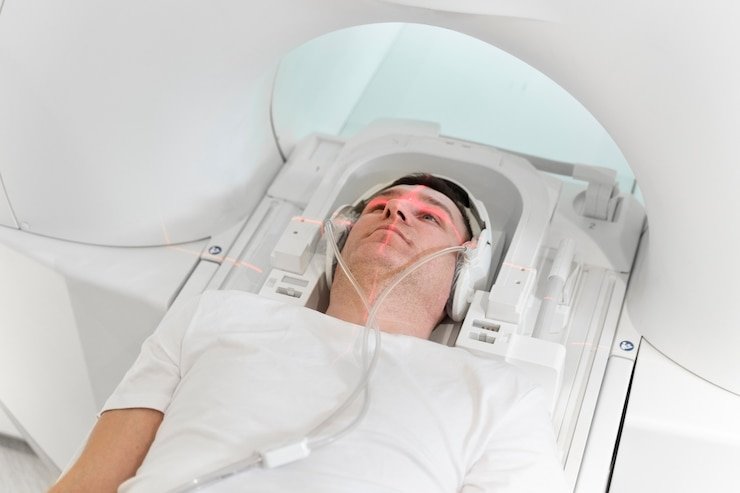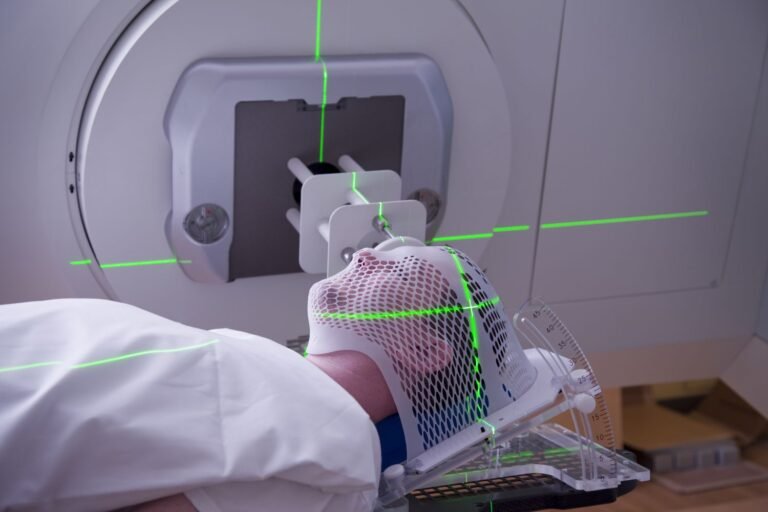Radiation Therapy: A Vital Treatment in the Fight Against Cancer.
Radiation therapy, also known as radiotherapy, is a cornerstone in the comprehensive treatment of cancer. It utilizes high-energy radiation to target and destroy cancer cells while minimizing damage to surrounding healthy tissues. From its inception to modern advancements, radiation therapy has played a crucial role in improving cancer outcomes and enhancing the quality of life for millions of patients worldwide. In this article, we’ll delve into the fundamentals of radiation therapy, its various techniques, applications, side effects, and ongoing developments in the field.
To Know More About It Please Click Here
Understanding Radiation Therapy
Radiation therapy works by damaging the DNA of cancer cells, thereby preventing them from dividing and multiplying. It can be delivered externally using a machine called a linear accelerator (external beam radiation therapy) or internally via radioactive materials placed directly into or near the tumor (brachytherapy). The goal of radiation therapy is to shrink tumors, alleviate symptoms, and eradicate cancer cells to achieve local control or even cure the disease.
Techniques of Radiation Therapy
- External Beam Radiation Therapy (EBRT): This is the most common form of radiation therapy, where high-energy X-rays or other types of radiation are directed from outside the body onto the tumor. EBRT is typically administered daily over several weeks, with each session lasting only a few minutes.
- Brachytherapy: In brachytherapy, radioactive sources are placed inside or adjacent to the tumor, delivering a high dose of radiation directly to the cancerous tissue while sparing nearby healthy organs. Brachytherapy may be temporary (the sources are removed after treatment) or permanent (the sources remain in place indefinitely).
- Intensity-Modulated Radiation Therapy (IMRT): IMRT delivers highly precise radiation beams that conform to the shape of the tumor, allowing for targeted treatment while minimizing exposure to surrounding healthy tissues. This technique is particularly useful for tumors located near critical structures such as the brain or spinal cord.
- Stereotactic Body Radiation Therapy (SBRT): SBRT delivers high doses of radiation to small tumors or metastatic lesions in fewer treatment sessions than conventional radiation therapy. It is often used for tumors in the lungs, liver, spine, and other areas where surgical resection may not be feasible.
Applications of Radiation Therapy
Radiation therapy is used in the treatment of various cancers, either as a standalone therapy or in combination with surgery, chemotherapy, or immunotherapy. It is effective in treating localized cancers such as breast, prostate, lung, and head and neck cancers, as well as certain metastatic tumors that have spread to distant sites. Radiation therapy may be employed with curative intent to eradicate the disease or palliatively alleviate symptoms and improve the quality of life in advanced or metastatic cancers.
Side Effects and Considerations
While radiation therapy is a powerful tool in cancer treatment, it can also cause side effects due to its effects on normal tissues. Common side effects include fatigue, skin irritation, hair loss, nausea, and changes in bowel or bladder function, depending on the area being treated. However, advancements in radiation technology and treatment planning have helped minimize side effects and improve treatment outcomes. Additionally, patients undergoing radiation therapy receive personalized care and support from a multidisciplinary team, including radiation oncologists, medical physicists, radiation therapists, and supportive care providers.
Ongoing Developments and Future Directions
Research in radiation oncology continues to evolve, with ongoing efforts focused on improving treatment precision, reducing side effects, and expanding the therapeutic window of radiation therapy. Innovations such as proton therapy, which delivers radiation with greater precision and lower doses to surrounding tissues, hold promise for improving outcomes and reducing long-term toxicities. Additionally, advances in imaging, artificial intelligence, and molecular targeting are shaping the future of radiation therapy, offering new opportunities for personalized and targeted cancer treatment.
To Know More About It Please Click Here
Conclusion
Radiation therapy is a vital component of modern cancer care, offering effective and targeted treatment for a wide range of malignancies. From its ability to shrink tumors and alleviate symptoms to its role in achieving long-term remission and cure, radiation therapy has transformed the landscape of cancer treatment. With ongoing advancements in technology, treatment techniques, and supportive care, radiation therapy continues to play a central role in the fight against cancer, providing hope and healing to patients around the world.







